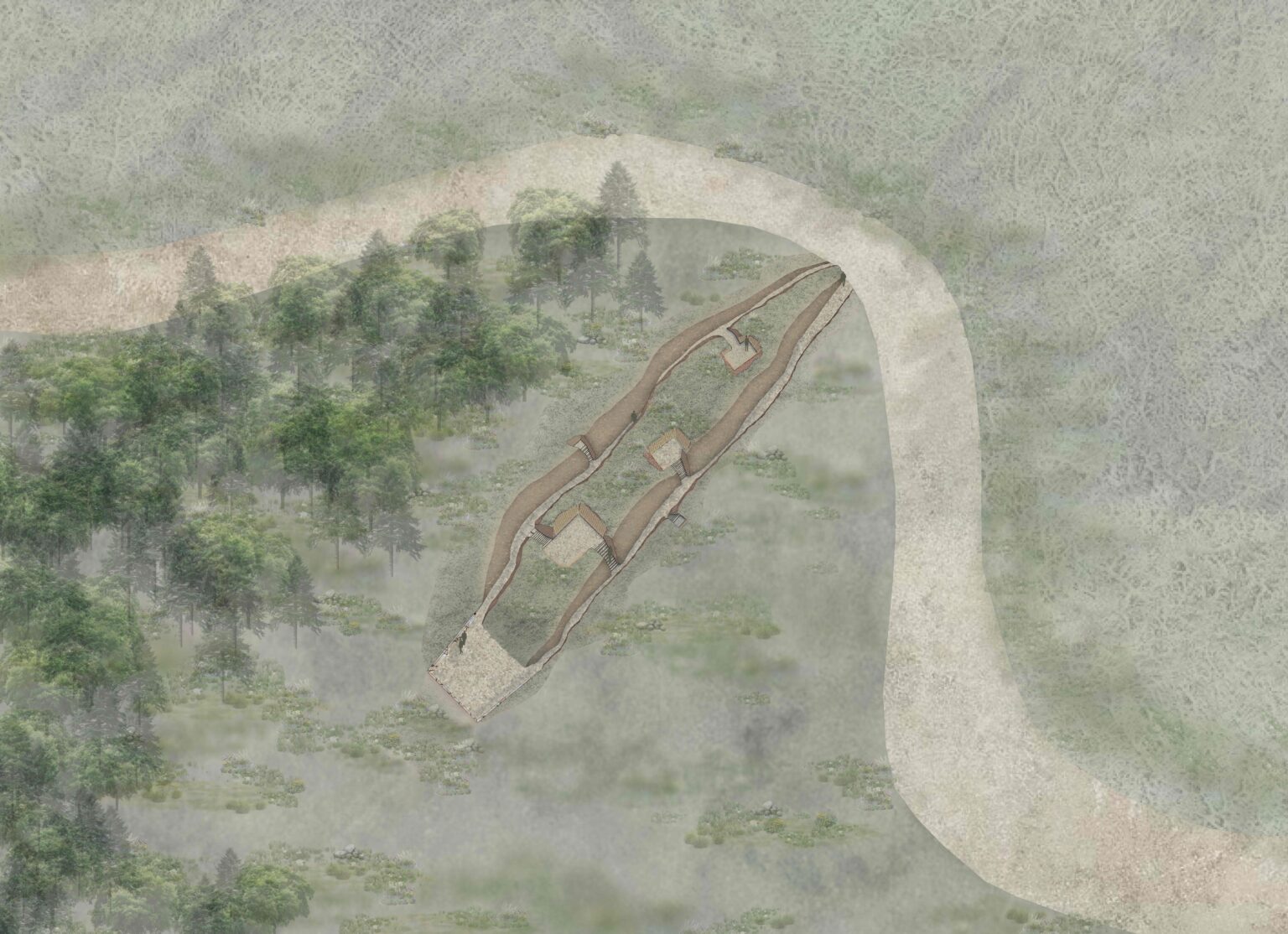MSA Stage 3 School of Architecture
Kyle Allan

During my three years at MSA, I developed an interest in creating designs that reflect their context. My work aims to foster a sense of place and connection with the community by exploring materiality, form and the development of a narrative or journey. The first project from Stage 3, titled Life-Long Learning Retreat, links contemporary architecture and the heritage of wool production. The second project, titled (In)Visible Boundaries, provides an experience in the landscape to observe the negative impacts of surrounding private estates and act in contrast as visitors rejuvenate the land.

Life-Long Learning Retreat, Fort William.
The Life-Long Learning Retreat, located in the town centre of Fort William offers a hub of creativity for visitors and residents of the town. Providing a connection to the Scottish Highlands historical industries as the workshop spaces of this multi-use building allows an interactive experience with the traditional and contemporary processes relating to wool production.
The material choices both internal and external create a connection with context, sourcing from local existing industries. The internal timber finishes provide a warmth which relates to the tactile qualities of wool as a material. The external perforated aluminium cladding again relates to wool, but through the ways in which light can pass through a woven surface.
(In)Visible Boundaries: Lochaber Observatories.
Approximately 85% of Lochaber is owned by private entities. As a result of lenient policies regarding land ownership, owners have exploited the land for its natural resources, engaging in activities which disrupt the area’s biodiversity (sporting and felling trees). The project allows visitors to engage and observe the ecological degradation.
The project uses the unowned and uninhabited areas of Lochaber. The excavation of land and the re-use of the soil creates a trench-like intervention, highlighting the political nature of land ownership and the idea of conflict. Whilst the form displays a physical representation of boundaries and the absurdities of boundary-making.
The journey through the site offers exploration and connection with the land as one moves through and engages with the varying heights, allowing them to look over the expansive land and observe the negative effects currently imposed. In an act to reclaim agency of the land, visitors are transformed from passive observers to proactive stewards of the land as they engage with planting and regrowth to help contribute to the recovery of the biodiversity of the area.
The intervention in the land provides an experience both restorative and reflective of the landscape. Engaging with the inherent beauty of the Scottish Highlands, and to better understand the fragility of the landscape and nature within the current climate emergency.












